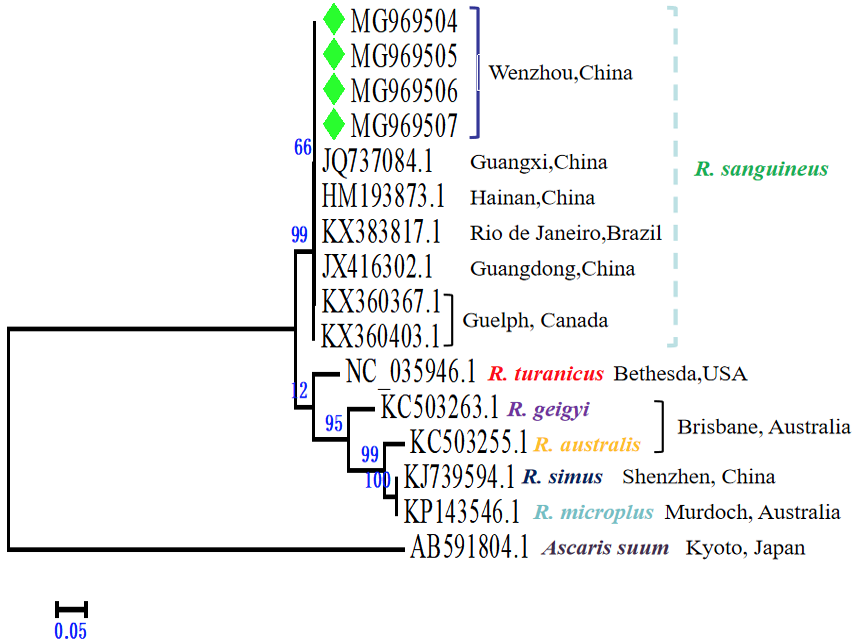Molecular Identification and Prevalence of Ehrlichia canis and Rhipicephalus sanguineus (Acari: Ixodidae) Infecting Pet Dogs in Wenzhou, China
Molecular Identification and Prevalence of Ehrlichia canis and Rhipicephalus sanguineus (Acari: Ixodidae) Infecting Pet Dogs in Wenzhou, China
Houqiang Luo1*, Yanfang Lan2, Ping Gan3, Wenjun Zhou4, Meng Wang1,
Bing Hu5, Zhuning Zhang5, Yu Bai1* and Kun Li6*
Phylogenetic tree for R. sanguineus based on partial COI gene sequences. Phylogenetic tree based on partial COI gene sequences of R. sanguineus was constructed using the neighbor-joining method with Kimura two-parameter analysis and bootstrap analysis of 1000 replicates. The numbers on the branches indicate the percentage of replicates that reproduced the topology for each clad. The green rhombi indicate the sequences acquired from the current study (Ascaris suum was used as an outgroup).
Phylogenetic tree for E. canis based on partial dsb gene sequences. Phylogenetic tree based on partial dsb gene sequences of E. canis was constructed by employing the neighbor-joining method with Kimura two-parameter analysis and bootstrap analysis of 1000 replicates. The numbers on the branches indicate the percentage of replicates that reproduced the topology for each clads. The red rhombi indicate the sequences acquired from the current study (Drosophila melanogaster was used as an outgroup).











